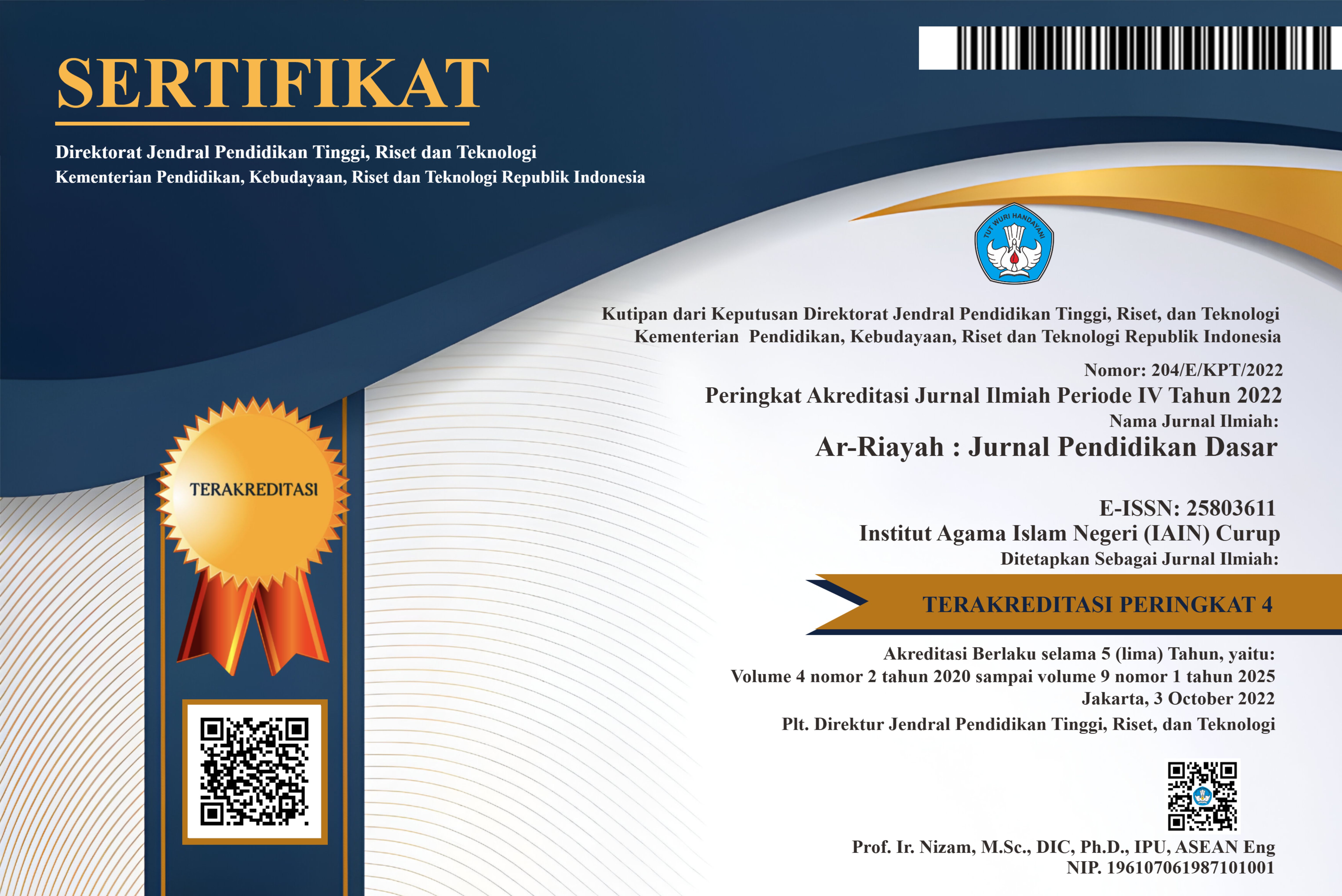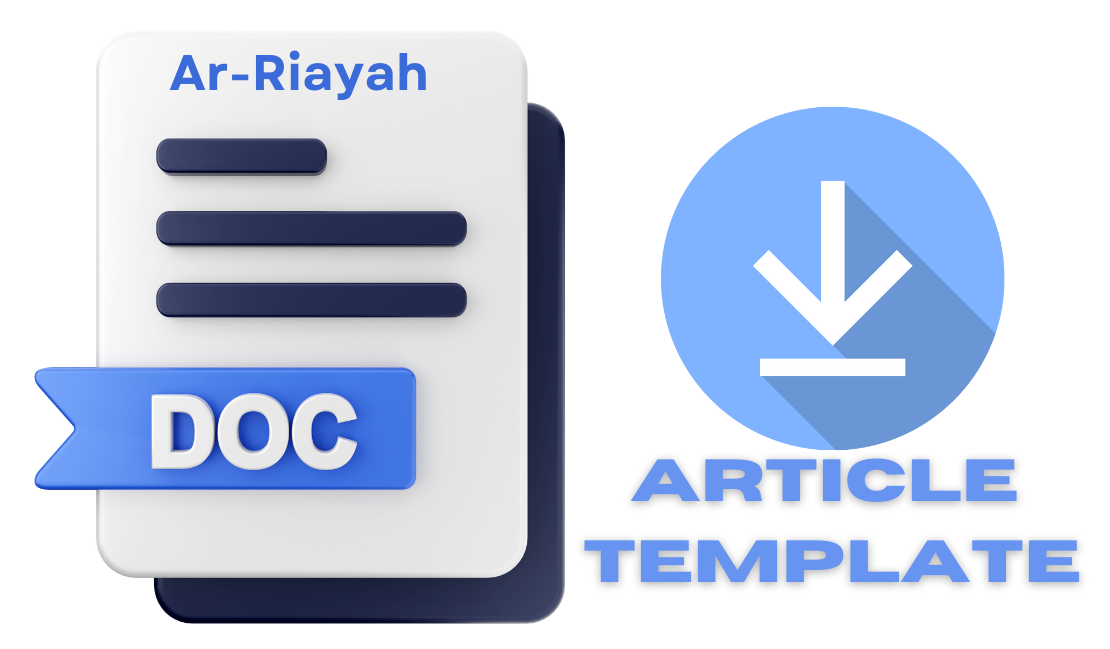Kemampuan Komunikasi Matematis Dalam Pendekatan Matematika Realistik di Sekolah Dasar
DOI:
https://doi.org/10.29240/jpd.v3i1.864Keywords:
Mathematics Learning, Realistic Mathematics Approach, Mathematical CommunicationAbstract
Downloads
References
Asmin. Implementasi Pembelajaran Matematika Realistik dan Kendala yang Muncul di Lapangan. (2007). (Online).(http://www.depdiknas.go.id/jurnal/44/asmin. htm
Badar, T. I. Mendesain model pembelajaran inovatif, progresif dan kontekstual. (Jakarta: Prenadamedia group. 2003).
Bansu I Ansari, Komunikasi Matematik Konsep dan Aplikasi (Banda Aceh:Pena, 2009)
Baroody. A.J. Problem Solving, Reasoning, and Communicating. (New York: Macmillan Publishing, 1993).
Dani Vardiansyah, Filsafat Ilmu Komunikasi “Suatu Pengantar” (Jakarta: PT.Indeks, 2008).
Haji. Pengaruh Pendekatan Matematika Realistik Terhadap Hasil Belajar Matematika di Sekolah Dasar. Disertasi UPI Bandung. (2005).
Iis Sri Elia R, Komunikasi Dalam Pembelajaran Matematika. Prossiding, Volume 1, No. 2, (2014).
National Council of Teacher Mathematics. Principles and Standards for Schools Mathematics. USA. Reston. V.A. (2000).
Ontario Ministry of Education’s. The Ontario Curriculum, Grades 1-8: Mathematics. Ontario: Queen’s Printer for Ontario, (2005).
Risna Mira Bella Saragih. Peningkatan Kemampuan Pemecahan Masalah Matematika Siswa Melalui Pendekatan Matematika Realistik. Tesis. (Medan : Program Pascasarjana Universitas Negeri Medan, 2011).
Saragih, S. Mengembangkan Kemampuan Berpikir Logis dan Komunikasi Matematik Siswa Sekolah Menegah Pertama melalui Pendekatan Matemaatika Realistik. Disertasi. (Bandung: Program Pascasarjana UPI Bandung. 2007).
Soedjadi, R., Kita Pendidikan Matematika di Indonesia. Direktorat Jenderal Pendidikan Tinggi Departemen Pendidikan Nasional. (2000).
Tarigan. D. Pemebelajaran Matematika Realsitik..( Jakarta : Departemen Pendidikan Nasional Direktorat Jenderal Pendidikan Tinggi, 2006)
Usdiyana, D. dkk. Meningkatkankemampuan Berpikir Logis Siswa SMP Melalui Pembelajaran Matematika Realistik. Jurnal Pengajaran MIPA. Vol. 13. No.1. Edisi April (2009).
Downloads
Published
How to Cite
Issue
Section
Citation Check
License
Authors who publish with Ar-Riayah: Jurnal Pendidikan Dasar agree to the following terms:
Authors retain copyright and grant the journal right of first publication with the work simultaneously licensed under a Creative Commons Attribution-NonCommercial-ShareAlike 4.0 International License (CC BY-NC-SA 4.0) that allows others to share the work with an acknowledgment of the work's authorship and initial publication in this journal.
Authors are able to enter into separate, additional contractual arrangements for the non-exclusive distribution of the journal's published version of the work (e.g., post it to an institutional repository or publish it in a book), with an acknowledgment of its initial publication in this journal.
- Authors are permitted and encouraged to post their work online (e.g., in institutional repositories or on their website) prior to and during the submission process, as it can lead to productive exchanges, as well as earlier and greater citation of published work (See The Effect of Open Access).











